Dagstuhl Seminar 19352
Computation in Low-Dimensional Geometry and Topology
( Aug 25 – Aug 30, 2019 )
Permalink
Organizers
- Maarten Löffler (Utrecht University, NL)
- Anna Lubiw (University of Waterloo, CA)
- Saul Schleimer (University of Warwick - Coventry, GB)
- Erin Moriarty Wolf Chambers (St. Louis University, US)
Contact
- Michael Gerke (for scientific matters)
Impacts
- Adjacency Graphs of Polyhedral Surfaces - Arseneva, Elena; Kleist, Linda; Klemz, Boris; Löffler, Maarten; Schulz, Andre; Wolff, Alexander; Vogtenhuber, Birgit - Cornell University : arXiv.org, 2021. - 22 pp..
- Hard diagrams of the unknot - Burton, Benjamin A.; Chang, Hsien-Chih; Löffler, Maarten; Mesmay, Arnaud de; Maria, Clement; Spreer, Jonathan; Sedgwick, Eric; Schleimer, Saul - Cornell University : arXiv.org, 2021. - 26 pp..
- Improved space bounds for Fréchet distance queries : article - Buchin, Maike; Hoog, Ivor van der; Ophelders, Tim; Silveira, Rodrigo I.; Schlipf, Lena, Staals, Frank - Aire-la-Ville : Eurographics Association, 2020. - 7 pp..
- Representing Graphs by Polygons with Side Contacts in 3D : article in 36th European Workshop on Computational Geometry, Würzburg, Germany, March 16 - 18, 2020 - Arseneva, Elena; Kleist, Linda; Klemz, Boris; Löffler, Maarten; Schulz, Andre; Vogtenhuber, Birgit; Wolff, Alexander - Würzburg : Universität , 2020. - 8 pp..
- Hard Diagrams of the Unknot : article - Burton, Benjamin A.; Chang, Hsien-Chih; Löffler, Maarten; Maria, Clement; Mesmay, Arnaud de; Spreer, Jonathan; Sedgwick, Eric; Schleimer, Saul - London : Taylor & Francis, 2023. - 20 pp - (Experimental mathematics ; 2023).
- Adjacency Graphs of Polyhedral Surfaces : article - Arseneva, Elena; Kleist, Linda; Klemz, Boris; Löffler, Maarten; Schulz, Andre; Vogtenhuber, Birgit; Wolff, Alexander - Berlin : Springer, 2024. - pp. 1429-1455 - (Discrete and computational geometry ; 71. 2024).
- Adjacency Graphs of Polyhedral Surfaces : article - Arseneva, Elena; Kleist, Linda; Klemz, Boris; Löffler, Maarten; Schulz, Andre; Vogtenhuber, Birgit; Wolff, Alexander - Wadern : LZI, 2021. - pp. 1-17 - (Leibniz International Proceedings in Informatics ; 189).
Schedule
One-dimensional structures embedded in higher-dimensional spaces are ubiquitous in both the natural and artificial worlds: DNA strands, migration paths, planetary orbits, rocket trajectories, robot motion planning, chip design, and much more. These are studied in different areas of mathematics and computer science, under many names: knots, curves, paths, traces, trajectories, graphs, and so on. However, researchers in many areas are just beginning to apply algorithmic techniques to find efficient algorithms for these structures, especially when more fundamental mathematical results are necessary tools.
Our Dagstuhl Seminar 19352 "Computation in Low-Dimensional Geometry and Topology" is a follow-up to "Applications of Topology to the Analysis of One-Dimensional Objects" (Dagstuhl Seminar 17072). Our overall goal is to identify connections between, and promote new research collaborations in, computational topology and computational geometry.
In this seminar, we will continue our study of one-dimensional objects, but now adding a time dimension. That is, we will consider these objects as they move from a given position towards an optimal position. Examples include:
- classical algorithms on trajectories like the Frechet distance as a way to formalize a distance measure as a curve changes;
- morphing between two versions of a common graph, which again tracks a higher dimensional space that corresponds to movement of a one-dimensional object;
- drawing and manipulating objects in three-manifolds, such as graphs, curves, or surfaces; and
- perhaps the simplest problem posed (in different ways) in all these areas, "how does one draw and morph a nice curve on a nice surface?"
In each of these examples, there is a core problem from one area that will be of interest to researchers in other areas.
In addition, we will invite participants and speakers with more of an emphasis on code development. In this way some of the groups can begin to focus on implementation issues that span these areas. While theoretical development of tools is key, there is also a great need for practical algorithms that can handle large datasets, from detecting knots in proteins to clustering trajectories and map matching.
Despite increasing collaborations between these areas, there is still a significant divide between the communities. To foster communication, we will have a few longer talks given by speakers that span the various areas, with the goal of quickly developing a strong set of open problems for groups of participants to work on. The emphasis on code development reflects our growing faith in the implementability and usefulness of solutions to the core problems of these fields.
 Maarten Löffler, Anna Lubiw, Saul Schleimer, and Erin Moriarty Wolf Chambers
Maarten Löffler, Anna Lubiw, Saul Schleimer, and Erin Moriarty Wolf Chambers
One-dimensional structures embedded in higher-dimensional spaces are ubiquitous in both the natural and artificial worlds: examples include DNA strands, migration paths, planetary orbits, rocket trajectories, robot motion planning, chip design, and many more. These are studied in different areas of mathematics and computer science, under many names: knots, curves, paths, traces, trajectories, graphs, and others. However, researchers in many areas are just beginning to apply algorithmic techniques to find efficient algorithms for these structures, especially when more fundamental mathematical results are required. Broad examples of such problems include:
- classical algorithms on trajectories like the Fréchet distance as a way to formalize a distance measure as a curve changes;
- morphing between two versions of a common graph, which again tracks a higher dimensional space that corresponds to movement of a one-dimensional object;
- drawing and manipulating objects in three-manifolds, such as graphs, curves, or surfaces; and
- perhaps the simplest problem posed (in different ways) in all these areas, "how does one draw and morph a nice curve on a nice surface?"
This seminar was the second in a series. In the first seminar, the goal was to identify connections and seed new research collaborations along the spectrum from knot theory and topology, through to computational topology and computational geometry, and all the way to graph drawing. After the success of the first seminar, the goal for this second round was to continue and extend prior work, in particular by focussing on how objects change over time.
The seminar began with three overview talks from researchers in different areas (trajectory analysis, algorithmic topology, and graph drawing) to motivate and introduce problems which would fit the theme of changes over time in the representations of low-dimensional objects in higher dimensional spaces. We then invited all participants to describe open problems (most of which were circulated in advance of the meeting) that fit with the topic of the workshop and could benefit from broad expertise. For the remainder of the workshop we split into small working groups each focussed on a particular open problem.
Throughout the workshop we used Coauthor, a tool for collaboration designed by Erik Demaine (MIT), to share progress and updates among all the working groups. This, together with twice-daily progress reports, allowed us to share ideas and expertise among all participants, which was very effective. Another advantage was that we had a record of the work accomplished when the workshop ended.
Below, we (the organizers) describe the main working group topics and how they connected to the overarching theme. The abstracts of talks in the seminar and preliminary results from the working groups are also outlined later in this report.
One group worked on open questions that were motivated by 3-manifolds. In particular, they considered lower bounds for deciding the complexity of a knot or link equivalence, with a goal of finding specific knots that require many simplification moves. Their work involved both designing smaller examples, as well as doing larger scale exhaustive search using the software tool Regina.
Another group considered representations of graphs and hypergraphs by touching polygons in 3-d. They were able to leverage the dual graph of the polyhedral complex in 3d, and make progress on classifying which types of graphs could (or could not) be realized. Their problem was primarily combinatorial, but the techniques used included several interesting topological arguments about embeddings of manifolds into 3d or into 3-manifolds.
Several groups considered problems about flows or morphs of curves in various settings. One question centered on visualizing actual embedded homotopies on a given surface; there is considerable prior work on how to compute such homotopies between curves quickly, but it generally focuses on computing the complexity of the homotopy as opposed to the actual sequence of simplifications needed. The group looked more closely at this algorithm, and was able to outline a proof that in fact an extension of that algorithm would generate the actual homotopy, for a slightly higher time cost. A second group considered curves in the plane, and investigated options for computing a "nice" morph between them. As the question was more vague, the group did quite a bit of background investigation on prior work, and then discussed a new technique based on 3-manifolds and normal surface theory which might lead to a new family of morphs. A third group looked at the problem of preprocessing a given curve so that the Fréchet distance to any other query curve could be efficiently computed, and were able to obtain improved time bounds for several variants of the problem.
In summary, the workshop fostered a highly collaborative environment where combining the expertise and knowledge of researchers from different communities allowed us to solve problems of common interest across those communities. A major theme was how connected the various problems could be; often, a proof technique or piece of literature suggested by a member of a different community proved useful or insightful to a group working in a different domain.
 Erin Moriarty Wolf Chambers, Maarten Löffler, Anna Lubiw, and Saul Schleimer
Erin Moriarty Wolf Chambers, Maarten Löffler, Anna Lubiw, and Saul Schleimer
- Elena Arseneva (St. Petersburg State University, RU) [dblp]
- Maike Buchin (Ruhr-Universität Bochum, DE) [dblp]
- Benjamin Burton (The University of Queensland - Brisbane, AU) [dblp]
- Hsien-Chih Chang (Duke University - Durham, US) [dblp]
- Arnaud de Mesmay (University of Grenoble, FR) [dblp]
- Vincent Despré (INRIA Nancy - Grand Est, FR) [dblp]
- Linda Kleist (TU Braunschweig, DE) [dblp]
- Boris Klemz (FU Berlin, DE) [dblp]
- Francis Lazarus (GIPSA Lab - Grenoble, FR) [dblp]
- Maarten Löffler (Utrecht University, NL) [dblp]
- Anna Lubiw (University of Waterloo, CA) [dblp]
- Clément Maria (INRIA - Valbonne, FR) [dblp]
- Tim Ophelders (Michigan State University, US) [dblp]
- Hugo Parlier (University of Luxembourg, LU) [dblp]
- Saul Schleimer (University of Warwick - Coventry, GB) [dblp]
- Lena Schlipf (FernUniversität in Hagen, DE) [dblp]
- André Schulz (FernUniversität in Hagen, DE) [dblp]
- Eric Sedgwick (DePaul University - Chicago, US) [dblp]
- Rodrigo I. Silveira (UPC - Barcelona, ES) [dblp]
- Jonathan Spreer (University of Sydney, AU) [dblp]
- Frank Staals (Utrecht University, NL) [dblp]
- Stephan Tillmann (University of Sydney, AU) [dblp]
- Ivor van der Hoog (Utrecht University, NL) [dblp]
- Birgit Vogtenhuber (TU Graz, AT) [dblp]
- Carola Wenk (Tulane University - New Orleans, US) [dblp]
- Erin Moriarty Wolf Chambers (St. Louis University, US) [dblp]
- Alexander Wolff (Universität Würzburg, DE) [dblp]
Related Seminars
- Dagstuhl Seminar 17072: Applications of Topology to the Analysis of 1-Dimensional Objects (2017-02-12 - 2017-02-17) (Details)
- Dagstuhl Seminar 22062: Computation and Reconfiguration in Low-Dimensional Topological Spaces (2022-02-06 - 2022-02-11) (Details)
- Dagstuhl Seminar 24072: Triangulations in Geometry and Topology (2024-02-11 - 2024-02-16) (Details)
- Dagstuhl Seminar 26122: Intractability in Discrete Geometry and Topology (2026-03-15 - 2026-03-19) (Details)
Classification
- data structures / algorithms / complexity
Keywords
- mathematics
- topology
- trajectories
- graph drawing
- knots

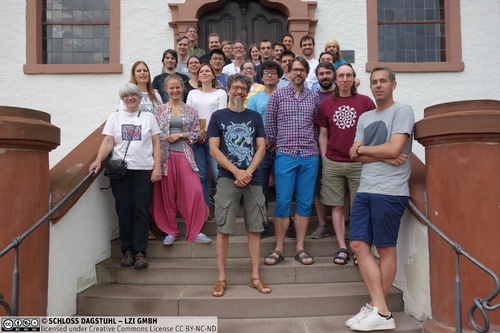
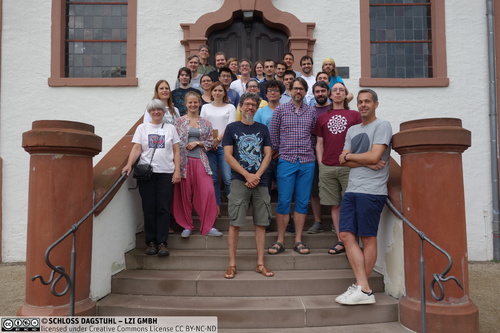
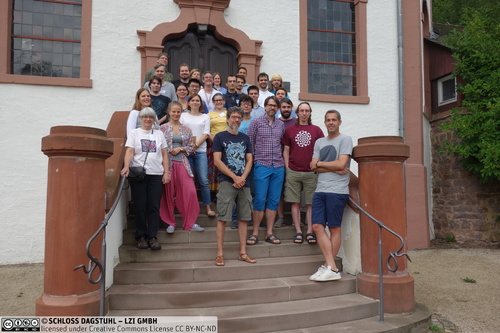
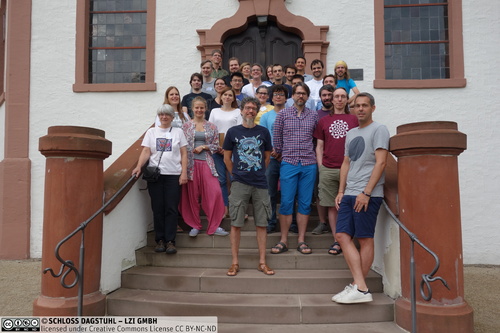
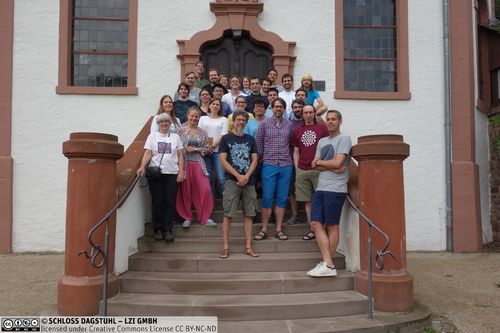
 Creative Commons BY 3.0 DE
Creative Commons BY 3.0 DE
